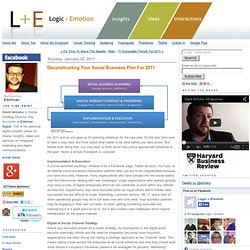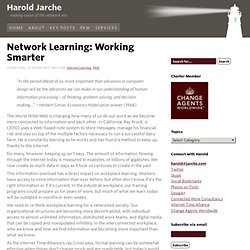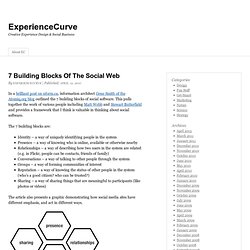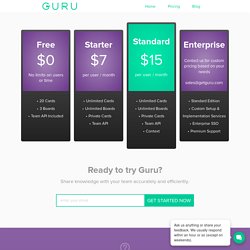

Organizational Generativity - Google Books. Joining TechSoup. Deconstructing Your Social Business Plan For 2011. It's 2011 and as you gear up for planning initiatives for the new year, it's the best time ever to take a step back and think about what needs to be done before you take action.

But before even doing that, you may want to think about how you've approached initiatives in the past. Here's a simple framework to consider: Implementation & ExecutionIf you've launched anything—whether it be a Facebook page, Twitter account, YouTube, or an internal communication/collaboration platform then you are to be congratulated because you have executed. However, many organizations who have jumped into the social waters now find themselves dealing with new challenges. Large organizations who operate globally may have scores of digital embassies which do not coordinate or exist within any defined architecture.
Digital & Social Channel Strategy Above any execution should sit a sound strategy. For a real world example of how all three come together, consider Dell's social media command center. Network Learning: Working Smarter. “In the period ahead of us, more important than advances in computer design will be the advances we can make in our understanding of human information processing – of thinking, problem solving, and decision making…” ~ Herbert Simon, Economics Nobel-prize winner (1968) The World Wide Web is changing how many of us do our work as we become more connected to information and each other.

In California, Ray Prock, Jr. (2010) uses a Web-based note system to store messages, manage his financial risk and stay on top of the multiple factors necessary to run a successful dairy farm. He is constantly learning as he works and has found a method to keep up, thanks to the Internet. For many, however, keeping up isn’t easy. The amount of information flowing through the Internet today is measured in exabytes, or billions of gigabytes. This information overload has a direct impact on workplace learning. We need to re-think workplace learning for a networked society. Network Learning Seeking: Using Filters.
Seven building blocks of the social web. In a brilliant post on nform.ca, information architect Gene Smith of the Atomiq.org blog outlined the 7 building blocks of social software.

This pulls together the work of various people including Matt Webb and Stewart Butterfield and provides a framework that I think is valuable in thinking about social software. The 7 building blocks are: Identity – a way of uniquely identifying people in the systemPresence – a way of knowing who is online, available or otherwise nearbyRelationships – a way of describing how two users in the system are related (e.g. in Flickr, people can be contacts, friends of family)Conversations – a way of talking to other people through the systemGroups – a way of forming communities of interestReputation – a way of knowing the status of other people in the system (who’s a good citizen? Who can be trusted?) Sharing – a way of sharing things that are meaningful to participants (like photos or videos) Here’s some reading on culture. Guru - Pricing. Are there any requirements needed to use Guru?

Yes. Guru is a Google Chrome web browser extension, so you currently need Chrome and a Google Account to use Guru. Inventing the Collaborative Workspace. Most corporate buildings don’t do a good job of supporting collaboration, brainstorming, and innovative work methods.

They tend to be dominated by cubicles or offices which are suited for individual work, or by hard-to-book conference rooms that teams can use but only for short periods of time. What’s needed is a more flexible space that better supports teams and inspires more open thinking. These are common at design firms such as frog where I work, but rare in corporate settings. I recently saw one such space when I was invited to give a talk at Citrix, the Silicon Valley-based maker of GoToMeeting and virtualization and cloud software, as part of their Design Salon speaker series. The talk was held in the company’s recently completed design collaboration space, a large open area where multiple disciplines can come together to innovate. Why did you create the collaboration space? Describe the space, and what are some of its special features? The interior design is quite minimal. Social Networks.
E L S U A ~ A KM Blog Thinking Outside The Inbox by Luis Suarez.